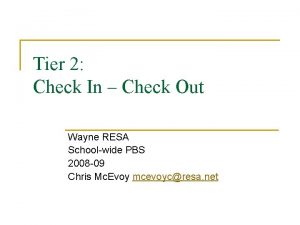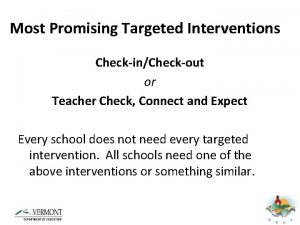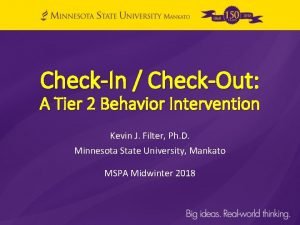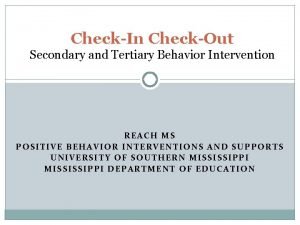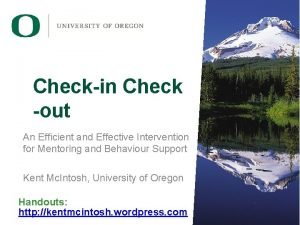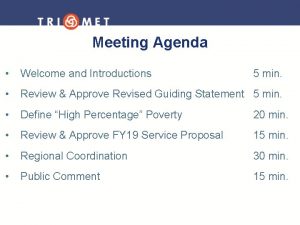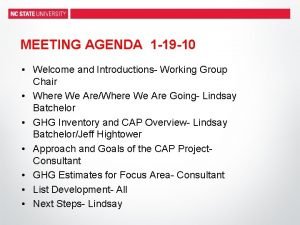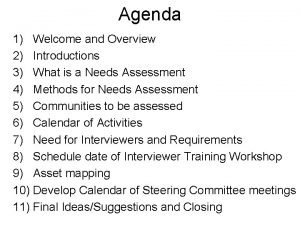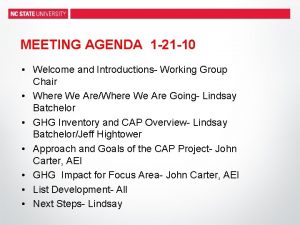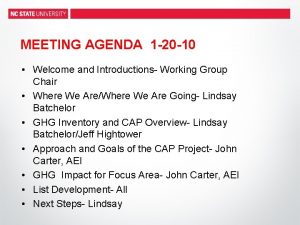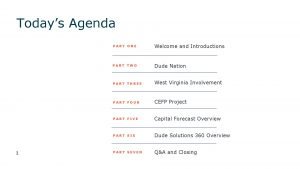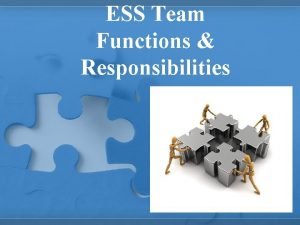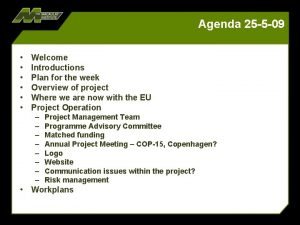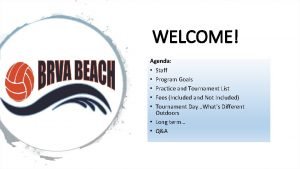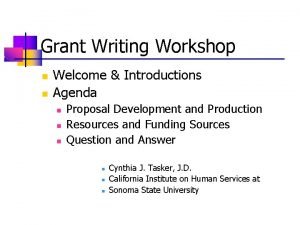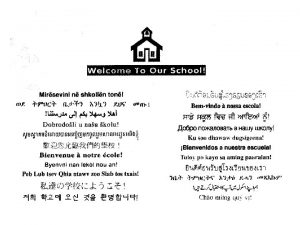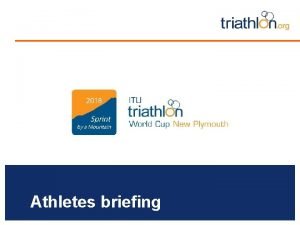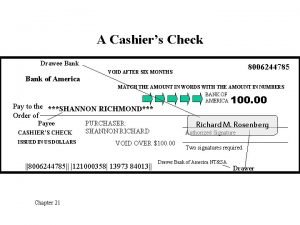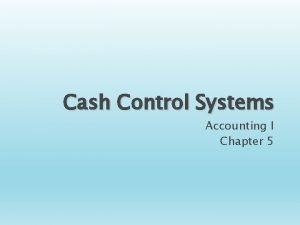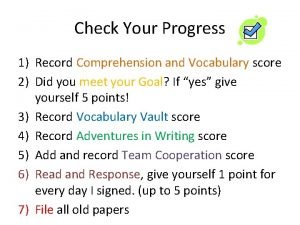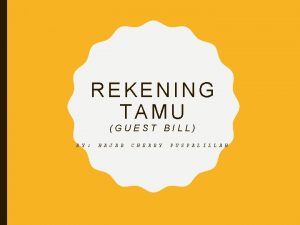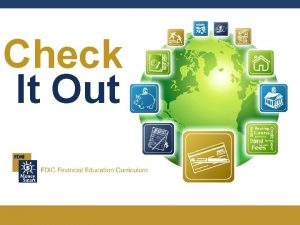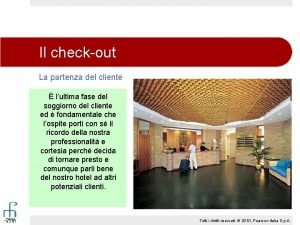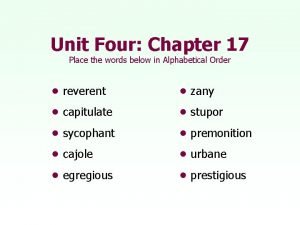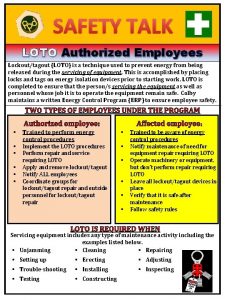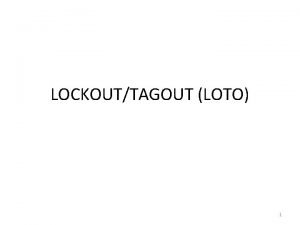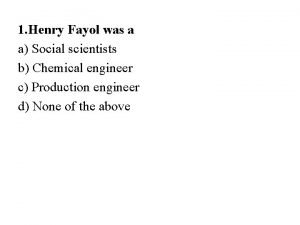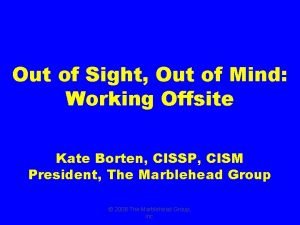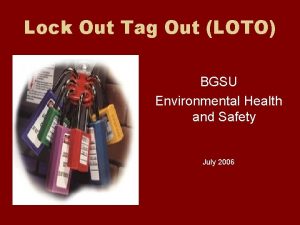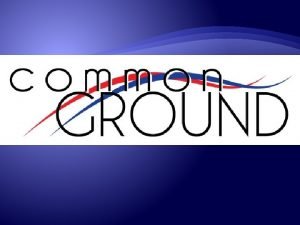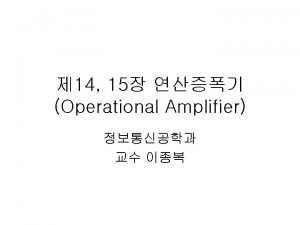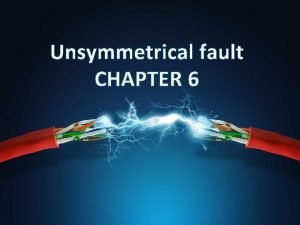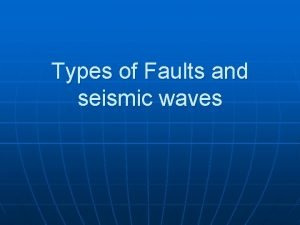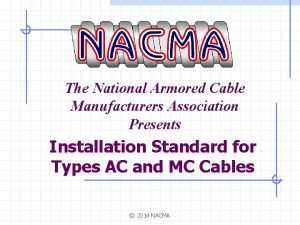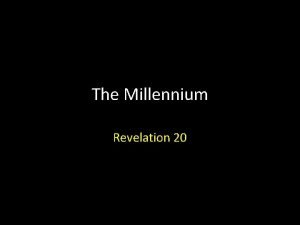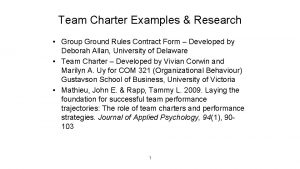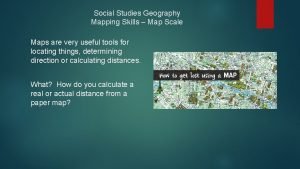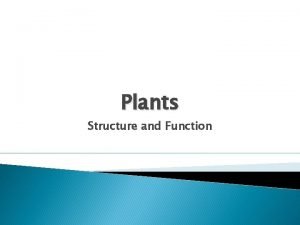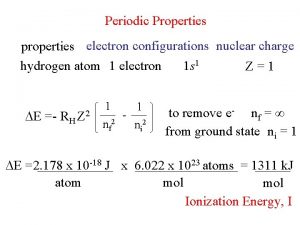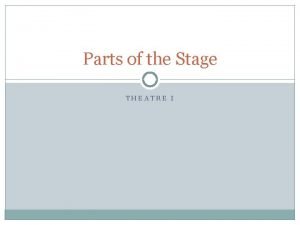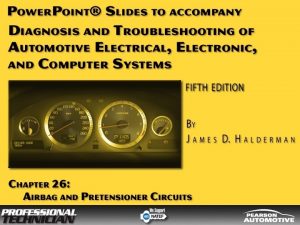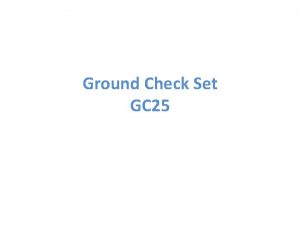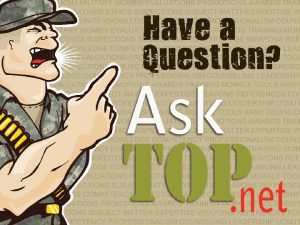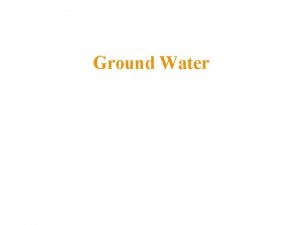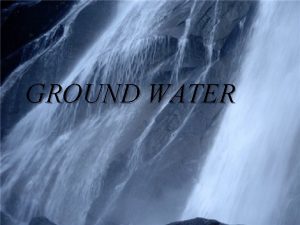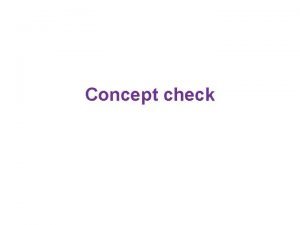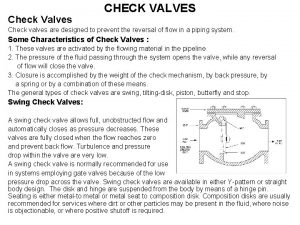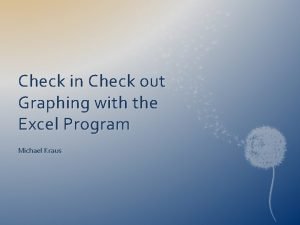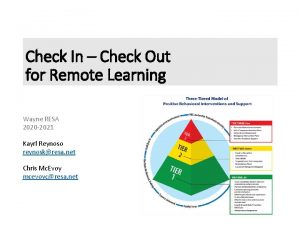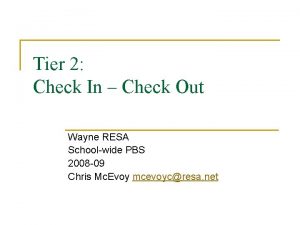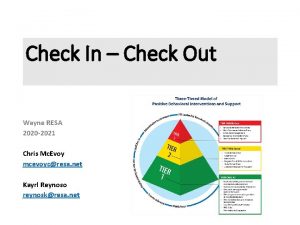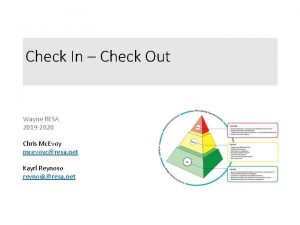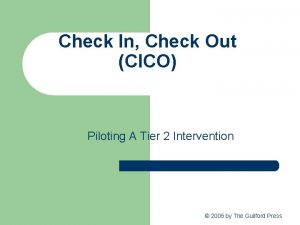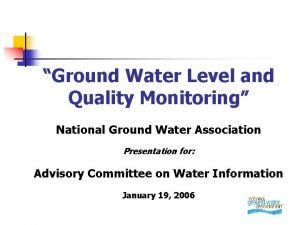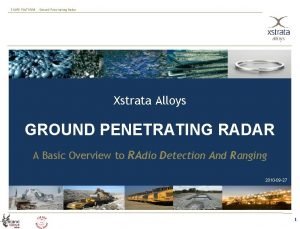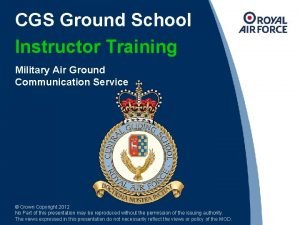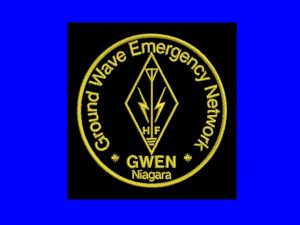Check It Out Welcome 1 Agenda 2 Ground





































































- Slides: 69

Check It Out

Welcome 1. Agenda 2. Ground Rules 3. Introductions Check It Out 2

Objectives: Part 1 • State the benefits of using a checking account • Determine which checking account is best for you • Identify the steps to open a checking account • Add money to a checking account • Withdraw money from a checking account • Use an Automated Teller Machine (ATM) Check It Out 3

What Do You Know? What do you know or want to learn about checking accounts? Check It Out 4

Your Experience • Have you ever had a checking account? • What comes to mind when you think about checking accounts? Check It Out 5

Benefits of Checking Accounts • What are the benefits of having a checking account? • Convenience • Cost • Better money management • Safety Check It Out 6

Convenience • Quick and easy access to funds • Immediate access to direct deposit funds • Reduced risk of losing cash with use of checks and debit cards Check It Out 7

Cost Check-cashing and Money Order Fees: Check-cashing: 4 x $20 = $80 x 12 mo. = $960/year Money order: 12 x $5 = $60/year + $960 = $1, 020/year Checking Account Costs: Money order: 12 x $5 = $60/year + $18 = $78/year Total savings by using a checking account = $942 Check It Out 8

Activity 1: Costs of Checking Versus Not Checking Complete Activity 1 in the Participant Guide. 1. Read each scenario. 2. Answer the questions provided. 3. Compare the costs. Check It Out 9

Better Money Management • Maintaining a checking account: • Allows you to monitor your spending and make wise spending choices • Gives you a better ability to stick to a spending plan and save money • Helps you build a positive relationship with your bank for future transactions • Provides a record that you pay your bills on time Check It Out 10

Safety • Limit your financial loss by reporting lost or stolen checks or debit cards to your bank as soon as possible • Select an FDIC-insured financial institution • Calculate your insurance coverage with the Electronic Deposit Insurance Estimator (EDIE): www. myfdicinsurance. gov Check It Out 11

Finding the Right Checking Account • Get recommendations • Determine your checking account needs • Compare accounts and fees charged Check It Out 12

Types of Checking Accounts • Free/Low-cost checking • Electronic-only/ ATM checking • Regular checking • Interest-bearing checking Check It Out 13

Fee Schedule • A fee schedule may include: • Monthly service fees • Minimum balance fees • ATM user fees • Overdraft or non-sufficient funds (NSF) fees • Stop payment fees Check It Out 14

Activity 2: Checking Account Fees Complete Activity 2 in the Participant Guide. 1. Read each description. 2. Fill in the matching fee type. Check It Out 15

Activity 3: Choosing the Right Checking Account Complete Activity 3 in the Participant Guide. 1. Read the scenario and the sample fee schedule. 2. Answer the questions provided. Check It Out 16

Requirements for Opening a Checking Account • To open an account, you will be asked for: • Photo identification (ID) • Your Social Security Number (SSN) or Individual Taxpayer Identification Number (ITIN) • Your opening deposit Check It Out 17

ID Verification and Checking History • Identity verification protects you! • The bank may check your banking and credit histories. • If you are unable to open an account, ask about “second chance” checking programs. Check It Out 18

Check Register • Use a check register to keep track of the money you put into and take out of your account. Check Date Number Description of Transaction Payment/Debit (-) Deposit/Credit (+) Balance Check It Out 19

Check Register • Record: • • Date: 3/20/20 XX Description of Transaction: Opening deposit Deposit/Credit (+): $200. 00 Balance: $200. 00 Check Date Number 3/20 Description of Transaction Opening Deposit Payment/Debit (-) Deposit/Credit (+) Balance 200 00 Check It Out 20

Cash Deposit • When making a cash deposit with a deposit slip: • Make sure the deposit slip has your correct account and address information • Write in the transaction date • Write in the total cash amount • Give the teller your deposit slip and cash Check It Out 21

Activity 4: Filling Out a Deposit Slip Complete Activity 4 in the Participant Guide. 1. Fill out the sample deposit slip. 2. Record the transaction in your check register. Check It Out 22

Activity 4: Filling Out a Deposit Slip Check Date Number Description of Transaction 3/20 Opening Deposit 3/22 Deposit Payment/Debit Deposit/Credit (-) (+) Balance 200 00 $200 00 30 00 $230 00 Check It Out 23

Check Deposit with a Deposit Slip • Sign (endorse) the back of the check to deposit or cash a check ure Your Signat IT ONLY FOR DEPOS • Write “For Deposit Only” if depositing the check • Fill out deposit slip Check It Out 24

Activity 5: Check Deposit with Cash Back Complete Activity 5 in the Participant Guide. 1. Fill out the sample deposit slip. 2. Record the transaction in your check register. Check It Out 25

Activity 5: Check Deposit with Cash Back Check Date Number Description of Transaction Payment/Debit Deposit/Credit (-) (+) 3/20 Opening Deposit 3/22 Deposit 3/23 Withdrawal 25 00 Balance 200 00 $200 00 30 00 50 00 $230 00 $280 00 $255 00 Check It Out 26

Direct Deposit • Direct deposit: • Is a safe way to receive money • Is a convenient and cost effective way to deposit and cash checks • Is an easy and convenient way to access your money • Is predictable and dependable Check It Out 27

Automated Teller Machine • ATMs allow you to make deposits and withdrawals 24/7. • ATM parts include: A. B. C. D. E. ATM screen ATM card slot ATM keypad Money dispenser Deposit slot Check It Out 28

ATM Deposits • Fill out the deposit slip or envelope, if required • Insert your ATM card as directed • Follow the prompts to deposit your money • Do not forget your card! Check It Out 29

Writing a Check 1. Make sure you have enough money in your account 2. Complete all the blank spaces on the check 3. Record the transaction in your check register Check It Out 30

Step 1: Make Sure You Have Enough Money • Record every deposit and withdrawal in your check register • Verify the account balance is accurate Check It Out 31

Step 2: Complete the Check • Date • Pay to the order of • Amount • Signature • Memo Check It Out 32

Preprinted Information • Your name and address • Check number and codes • Bank’s name • Routing number • Account number Check It Out 33

Activity 6: Writing a Check Complete Activity 6 in the Participant Guide. 1. Fill out the sample check. 2. Record the transaction in your check register. Check It Out 34

Activity 6: Writing a Check 03/20/20 XX Coffee Mart 19. 75 Nineteen Dollars and 75/100 --------New coffee maker Sign your name here Check It Out 35

Step 3: Record the Transaction Check Date Number Description of Transaction Payment/Debit Deposit/Credit (-) (+) 3/20 Opening Deposit 105 Balance 200 00 $200 00 3/22 Deposit 30 00 $230 00 3/23 Deposit 50 00 $280 00 3/23 Withdrawal 25 00 $255 00 3/26 Coffee Mart 19 75 $235 25 Check It Out 36

Writing a Check for Cash • Write “Cash” or your name on the “Pay to the Order Of” line 03/20/20 XX Cash 40. 00 Forty Dollars and 00/100 ----------Sign your name here. Check It Out 37

Withdrawing Money from an ATM 1. Insert your ATM card 2. Follow the prompts on the screen 3. Take your money and ATM card (if applicable) If using another bank’s ATM, be aware of the fees your bank and the other bank charges. Check It Out 38

Summary • What final questions do you have? • What have you learned? • How would you evaluate the training? Check It Out 39

Part 1 Conclusion • You learned about: • The benefits of having a checking account instead of using a check-cashing service • The types of checking accounts available • How to open a checking account • How to write checks • How to use ATM and debit cards • How to make deposits and withdrawals • How to keep accurate records Check It Out 40

Objectives: Part 2 • List four types of electronic banking services • Explain how debit cards are linked to checking accounts • Record fees and transactions in your check register Check It Out 41

Objectives: Part 2 • Explain overdraft fees and how they affect your checking account • Reconcile a check register with a bank statement • Describe how to manage a checking account wisely Check It Out 42

What Do You Know? What do you know or want to learn about checking accounts? Check It Out 43

Electronic Banking • Electronic banking includes: • ATM and transactions • Automatic bill pay • Online bill pay • Cell phone banking Check It Out 44

Debit Cards • With a debit card, you can: • Withdraw cash from an ATM • Make purchases at retail locations • You must have a Personal Identification Number (PIN) to complete electronic debit card transactions. Check It Out 45

Automatic and Online Bill Payment • Automatic bill payment transfers money electronically from your account to pay your bills automatically. • Online bill payment allows you to designate when bills are paid from your account each month. Check It Out 46

Cell Phone (Mobile) Banking • Options may include: • Text messaging with your financial institution • Accessing your online bank account from your cell phone • Instantly paying for purchases using your cell phone Check It Out 47

Steps to Keeping Accurate Account Records 1. Record all transactions in your check register or budgeting software 2. Record maintenance fees, interest, and other bank charges 3. Review monthly checking account statements 4. Reconcile your check register with monthly checking account statements Check It Out 48

ATM Receipts • Printed receipts may include: • Transaction amount • Any extra fees charged • Transaction date and time • Transaction type • Account or card code and available balance • ATM location, ID, or code • Bank or merchant name TOTAL TERMINAL FEE $200. 00 $1. 00 DATE TIME 01/24/12 16: 52 TRANSACTION WITHDRAWAL CHECKING 92465135846 CARD NUMBER ******5355 AVAILABLE $1039. 54 99 E. RIVER RD CITY ST YOUR FINANCIAL INSTITUTION Check It Out 49

Record All Transactions in Your Check Register Check Date Number Description of Transaction Payment/Debit (-) Deposit/Credit (+) Balance Check It Out 50

Activity 1: Record Transactions in Your Check Register Complete Activity 1 in the Participant Guide. 1. Record the transactions in your check register. Check It Out 51

Record All Transactions Check Date Number Description of Transaction Payment/Debit (-) Deposit/Credit (+) 2/20 Opening Balance 105 Balance $200 00 2/26 Coffee Mart 19 75 $180 25 3/12 Withdrawal 100 00 $80 25 3/19 Deposit 30 00 $110 25 3/19 Deposit 50 00 $160 25 Check It Out 52

Record Interest and Fees Check Date Number Description of Transaction Payment/Debit (-) Deposit/Credit (+) 2/20 Opening Balance 105 Balance $200 00 2/26 Coffee Mart 19 75 $180 25 3/12 Withdrawal 100 00 $80 25 3/19 Deposit 30 00 $110 25 3/19 Deposit 50 00 $160 25 3/20 Monthly fee 5 00 $155 25 Check It Out 53

Checking Account Statement 1 1. 2. 3. 4. 5. 6. 7. Bank name/address Statement period Your name/address Account number Transactions Cashed checks Account summary with fees/charges 3 4 2 5 6 7 Check It Out 54

Reconciling Your Checking Account • Balancing: Keeping your checkbook register up-to-date and maintaining totals • Reconciling: Finding and correcting any differences between the statement balance and your check register balance Check It Out 55

Activity 2: Reconcile Your Check Register Complete Activity 2 in the Participant Guide. 1. Use the monthly account statement to reconcile your check register. 2. Follow the directions listed in your Participant Guide. Check It Out 56

Activity 3: Checking Account Reconciliation Form Complete Activity 3 in the Participant Guide. 1. Use the checking account reconciliation form to reconcile your check register with your monthly account statement. 2. Follow the directions listed in your Participant Guide. Check It Out 57

Activity 3: Checking Account Reconciliation Form Step 2 Step 3 List and total all outstanding deposits List and total all outstanding withdrawals or debits Date 3/19/20 XX Amount Date Amount $30. 00 $50. 00 Total $80. 00 Total Check It Out 58

Activity 3: Checking Account Reconciliation Form Step 4 Account balance Add deposits outstanding (Step 2) Total Subtract withdrawals outstanding (Step 3) Balance $75. 25 $80. 00 $155. 25 *This balance should agree with the balance in your check register. Check It Out 59

Correcting Errors • Call, write, or visit your bank as soon as you find an error on your bank statement • Follow up with a letter detailing the error, if applicable • Notify the bank of error no later than 60 days after the date of the statement Check It Out 60

Overdraft Fees • Overdraft fees: • Charged when you spend more money than you have in your account • Non-Sufficient Funds (NSF) fees: • Occur when a bank returns a check or other item unpaid because you do not have sufficient funds in your account to cover it Check It Out 61

Opt-In Rule for Some ATM/Debit Card Transactions • New opt-in rule: the bank will ask you how to handle ATM and point of sale debit card transactions that would overdraw your account • By default, you are “opted-out. ” • If you opt-in to an overdraft program, the bank will charge a fee to cover transactions. • You can change your mind. Check It Out 62

Sample Opt-In Notice Check It Out 63

Other Types of Overdrafts • The Overdraft Opt-in Rule does not apply to other types of overdraft transactions, such as: • Checks • Automatic (scheduled) bill payments (e. g. , online bill-pay and recurring charges billed to a debit card) Check It Out 64

“Bad Checks” • Writing bad checks can have very serious consequences for you: • Fees of $30 or more • Your bank can close your account and report negative information to credit bureaus • The check might be turned over to a collections agency • Knowingly writing a bad check is a crime in every state Check It Out 65

Overdraft Scenario • Lisa spent $150. She only had $125 in her account. She was charged a $30 overdraft fee. • How much did Lisa overdraw her account? $25 + $30 fee = $55 • She gets paid in 3 days and is charged $5/day she is overdrawn. How much will she be overdrawn? 3 x $5 = $15 + $55 = $70 • When Lisa receives her paycheck for $865, what will her new balance be? $865 - $70 = $795 Check It Out 66

Avoiding Overdraft Fees • Keep your check register updated • Pay attention to electronic transactions • Remember to record automatic payments and checks • Keep track of your account balance • Review your statements monthly Check It Out 67

Summary • What final questions do you have? • What have you learned? • How would you evaluate the training? Check It Out 68

Conclusion • You learned about: • Electronic banking • Reconciling an account • Overdraft and line of credit programs • Debit cards and your checking account • How to manage your checking account wisely Check It Out 69
 Behavior check in check out sheet
Behavior check in check out sheet Behavior check in check out sheet
Behavior check in check out sheet Check in check out
Check in check out Check in check out system
Check in check out system Pbis check in check out
Pbis check in check out Check-in/check-out intervention template
Check-in/check-out intervention template Songs with poetic devices
Songs with poetic devices Agenda sistemica y agenda institucional
Agenda sistemica y agenda institucional Agenda welcome and introductions
Agenda welcome and introductions Agenda welcome and introductions
Agenda welcome and introductions Agenda welcome and introductions
Agenda welcome and introductions Meeting agenda welcome and introductions
Meeting agenda welcome and introductions Agenda welcome and introductions
Agenda welcome and introductions Agenda welcome
Agenda welcome Agenda welcome and introductions
Agenda welcome and introductions Welcome session agenda
Welcome session agenda Meeting agenda welcome and introductions
Meeting agenda welcome and introductions Agenda welcome and introductions
Agenda welcome and introductions Welcome agenda
Welcome agenda Agenda welcome and introductions
Agenda welcome and introductions Agenda for parent orientation
Agenda for parent orientation Agenda welcome and introductions
Agenda welcome and introductions Agenda welcome and introductions
Agenda welcome and introductions Where is the check number on a cashier's check
Where is the check number on a cashier's check Starburst method
Starburst method Quickchek menu
Quickchek menu Chapter 5 cash control systems answer key
Chapter 5 cash control systems answer key Check my progress vocabulary check
Check my progress vocabulary check Project close out meeting
Project close out meeting Wise men three clever are we
Wise men three clever are we Separate bill
Separate bill How to fill out the back of a check
How to fill out the back of a check Fase check out
Fase check out One of the four chapter 17
One of the four chapter 17 Put out the light and then put out the light meaning
Put out the light and then put out the light meaning Out, out— robert frost
Out, out— robert frost Out of sight out of mind psychology
Out of sight out of mind psychology Analysis of out out
Analysis of out out Lock out tag out safety talk
Lock out tag out safety talk Personification in out out by robert frost
Personification in out out by robert frost Time
Time Matt 11:28 msg
Matt 11:28 msg Lock ouy
Lock ouy Out, damned spot! out, i say!
Out, damned spot! out, i say! Henri fayol was a social scientist
Henri fayol was a social scientist Makna out of sight out of mind
Makna out of sight out of mind Log out tag out deutsch
Log out tag out deutsch Hollow ground chamfer
Hollow ground chamfer Common ground partnership
Common ground partnership Zone of areation
Zone of areation Virtual ground in op amp
Virtual ground in op amp What does tarry stool look like
What does tarry stool look like Unsymmetrical fault example
Unsymmetrical fault example The point on the ground directly above the focus
The point on the ground directly above the focus Mc cable supplier
Mc cable supplier There is no neutral ground in the universe
There is no neutral ground in the universe Nut happiness
Nut happiness Team charter ground rules examples
Team charter ground rules examples Coffee ground emesis
Coffee ground emesis Ground vs excited state
Ground vs excited state The ground beneath my feet is open wide meaning
The ground beneath my feet is open wide meaning Above ground horizontal stem
Above ground horizontal stem What is ground distance in geography
What is ground distance in geography Proscenium drawing
Proscenium drawing What is this
What is this Ground tissue system
Ground tissue system Hydrogen electron configuration
Hydrogen electron configuration Light booth theatre definition
Light booth theatre definition Lyric definition
Lyric definition What conducts power and ground to the driver's side airbag?
What conducts power and ground to the driver's side airbag?
